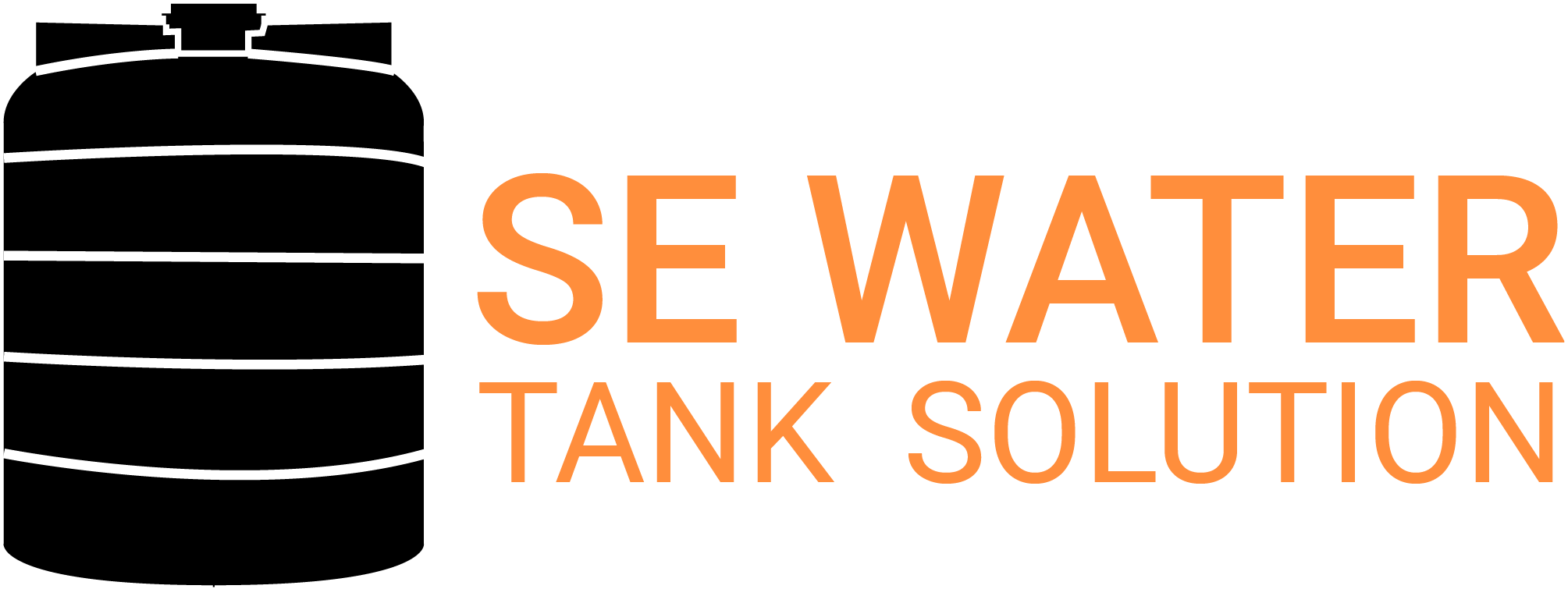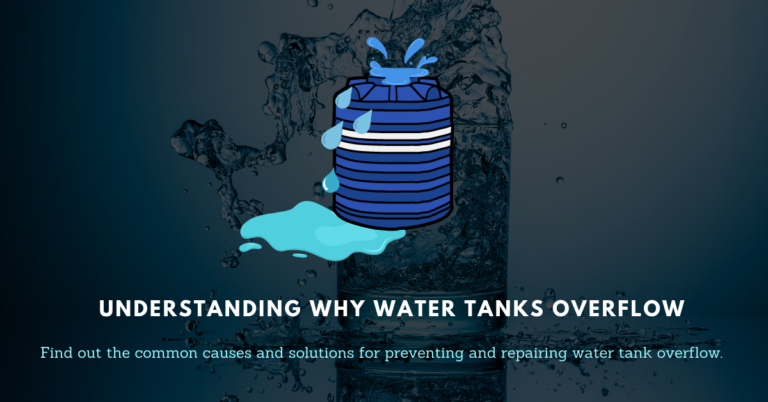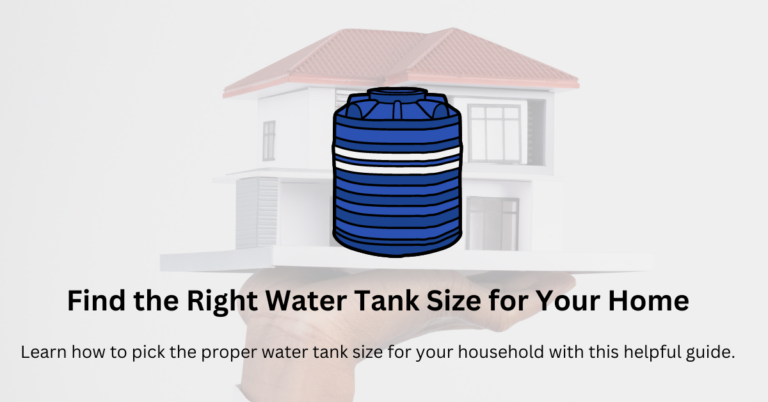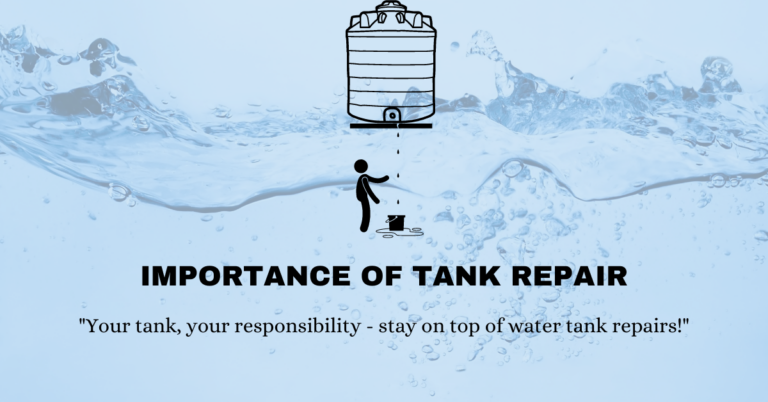I. Introduction
In this guide will explore the importance of waterproofing and common waterproofing problems and provide you with all the information you need to understand, prepare for, and execute successful waterproofing projects. Waterproofing is a crucial aspect of maintaining the integrity and longevity of any structure.
Whether it’s your home, office, or any other building, protecting it from water damage is essential. This guide will delve into various aspects of waterproofing, including the different types, materials, techniques, and tips for hiring a waterproofing contractor or doing it yourself.
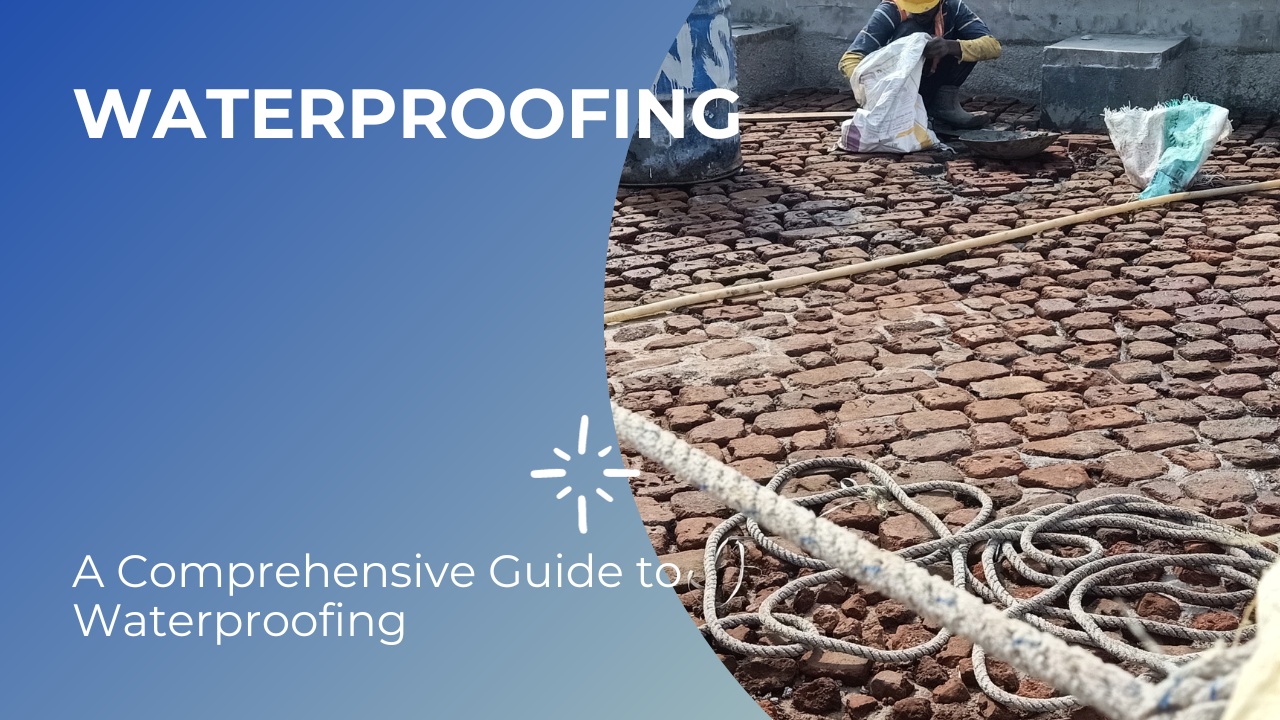
A. Importance of Waterproofing
Waterproofing is not just about keeping your property dry; it has several significant advantages. Firstly, it helps prevent water damage, which can be costly to repair and compromise the structural integrity of the building. By waterproofing your home or office, you can minimize the risks associated with water infiltration, such as mold growth, rotting of wood, and deterioration of the building’s foundation. Secondly, waterproofing also protects your belongings and valuable assets.
Water damage can ruin furniture, electronic devices, important documents, and other personal items. Investing in proper waterproofing measures can safeguard your belongings and avoid financial losses. Moreover, waterproofing contributes to maintaining a healthy living environment.
B. Common Waterproofing Problems
- Leaking Basements: Basements are particularly vulnerable to water intrusion due to their below-ground level and proximity to the water table. Common causes of basement leaks include cracks in the foundation, faulty drainage systems, and poor waterproofing techniques.
- Roof Leaks: A damaged or poorly maintained roof can lead to water leaks, which can cause significant damage to the interior of the building. Common causes of roof leaks include missing or broken shingles, cracked flashing, and clogged gutters.
- Bathroom and Kitchen Water Damage: Water leaks in bathrooms and kitchens can result from faulty plumbing, damaged seals, or improper installation of fixtures. These leaks can lead to mold growth, wood rot, and damage to cabinets and flooring.
- Balcony and Terrace Issues: Improper waterproofing of balconies and terraces can cause water to seep into the underlying structure, leading to structural damage and aesthetic issues. Common problems include cracks in the flooring, inadequate slope for water drainage, and insufficient waterproofing membranes.
- Exterior Wall Water Damage: Poorly waterproofed exterior walls can allow water to penetrate the building, leading to moisture buildup, mold growth, and even structural damage. Common causes of external wall water damage include cracks, inadequate sealants, and damaged siding.
II. Understanding Waterproofing
Waterproofing is a crucial aspect of building construction and maintenance. It involves the application of materials and techniques to prevent water penetration and damage to structures. In this section, we will delve into the concept of waterproofing and explore the different types of waterproofing methods commonly used.
A. What is Waterproofing?
Waterproofing refers to making a structure or surface impervious to water, protecting it from moisture-related issues such as leaks, dampness, and mold growth. Implementing waterproofing measures in areas prone to water exposure, such as basements, roofs, bathrooms, kitchens, balconies, and exterior walls, is essential.
The primary goal of waterproofing is to create a barrier that prevents water from seeping through surfaces and causing damage. By effectively sealing the structure, waterproofing not only safeguards the integrity of the building but also prolongs its lifespan.
B. Types of Waterproofing
Several waterproofing methods are available, each suitable for specific areas and conditions. Let’s explore some of the most commonly used types of waterproofing:
- Waterproofing Membranes: These thin sheets or coatings are applied to surfaces to create a watertight barrier. Membranes can be made of bitumen, modified bitumen, PVC, EPDM, or other synthetic materials. They are commonly used for roof waterproofing, foundation walls, and underground structures.
- Cementitious Coatings: Cement-based waterproofing coatings are applied to concrete surfaces to protect against water penetration. These coatings are typically mixed with water and used as a liquid, which forms a breathable waterproof layer once it dries and hardens.
- Liquid Waterproofing Systems: Liquid waterproofing systems involve the application of liquid membranes directly onto surfaces, forming a seamless and flexible barrier. These systems are often used for balconies, terraces, and wet areas like bathrooms and kitchens.
- Injection Waterproofing: This method repairs cracks and leaks in concrete structures. A specialized waterproofing material is injected into the cracks, filling them and preventing further water infiltration.
- Bentonite Waterproofing: Bentonite clay is a natural material that expands when it comes into contact with water, forming a waterproof barrier. It is commonly used for below-grade waterproofing in basements and foundation walls.
- Bituminous Waterproofing: To create a waterproof layer, bituminous coatings or sealants derived from petroleum are applied to surfaces. These coatings are commonly used for roof waterproofing and below-grade applications.
You can decide which approach suits your needs by understanding the different waterproofing methods. Whether you are waterproofing a basement, roof, bathroom, or any other area, choosing the right way is crucial for long-lasting protection against water damage.
III. Preparing for Waterproofing
Before you start the waterproofing process, it is essential to prepare the surface and assess the waterproofing needs adequately. This section will guide you through the necessary steps to ensure a successful waterproofing project.
A. Assessing the Waterproofing Needs
The first step in preparing for waterproofing is to assess the specific needs of your property. Every building is unique, and understanding the areas that require waterproofing will help you determine the appropriate materials and techniques to use.
Start by examining the interior and exterior of your property for signs of water damage, such as dampness, leaks, or mold growth. Pay close attention to areas prone to water infiltration, such as basements, roofs, bathrooms, kitchens, balconies, terraces, and exterior walls.
Suppose you are unsure about the extent of the waterproofing required. In that case, consulting with a professional waterproofing contractor who can conduct a thorough assessment and provide expert advice tailored to your needs is advisable.
B. Identifying Problem Areas
Identifying problem areas is crucial to ensure effective waterproofing. Look for cracks, gaps, or other structural vulnerabilities allowing water to seep. Common problem areas include foundation walls, joints, windows, doors, and roof penetrations.
Please note these problem areas and prioritize them based on their severity. It will help you allocate your resources and focus on areas that require immediate attention.
C. Preparing the Surface
Properly preparing the surface is vital for the success of any waterproofing project. The surface must be clean, dry, and free from loose debris, dirt, or contaminants. Start by removing any existing coatings, paints, or sealants from the surface using appropriate tools and techniques. Thoroughly clean the area using a pressure washer or a suitable cleaning solution to remove all dirt and grime.
If any cracks or gaps are present, filling them with an appropriate sealant or patching compound is essential. This will help create a smooth surface for the waterproofing materials to adhere to. Once the surface is clean and repaired, allow it to dry completely before proceeding with the waterproofing application. Moisture on the surface can compromise the effectiveness of the waterproofing materials, so it is crucial to ensure that the surface is dry before moving forward.
IV. Waterproofing Materials and Techniques
Waterproofing Materials and Techniques Waterproofing is crucial in protecting our buildings and structures from the damaging effects of water infiltration. This section will explore various materials and techniques commonly used for waterproofing
A. Waterproofing Membranes
Waterproofing membranes are widely used in both residential and commercial construction projects. These membranes are thin, flexible sheets applied to the surface to prevent water penetration. They act as a barrier against moisture, preventing leaks and dampness. Different types of waterproofing membranes are available in the market, such as bituminous membranes, PVC membranes, EPDM membranes, and TPO membranes. Each type has its unique properties and applications. Bituminous membranes are commonly used for below-ground waterproofing, while PVC membranes are ideal for roof waterproofing.
B. Cementitious Coatings
Cementitious coatings are another popular choice for waterproofing. These coatings are made by mixing cement with various additives to enhance their waterproofing properties. Cementitious coatings create a protective layer that effectively seals out water when applied to the surface. One of the advantages of cementitious coatings is their ability to fill cracks and gaps in the surface, providing additional protection against water infiltration. These coatings are commonly used for basement walls, swimming pools, and concrete structures exposed to water.
C. Liquid Waterproofing Systems
Liquid waterproofing systems are gaining popularity due to their ease of application and versatility. These systems consist of liquid-based products that are applied directly to the surface. They form a seamless, elastic membrane that prevents water from seeping through. Liquid waterproofing systems can be applied to various surfaces, including concrete, metal, and wood. They are commonly used for roofs, balconies, and terraces. The advantage of these systems is that they can adapt to the shape and contours of the surface, providing effective waterproofing even in complex areas.
D. Injection Waterproofing
Injection waterproofing is a technique used to repair and waterproof cracks and joints in concrete structures. It involves injecting a specialized waterproofing material into the cracks to seal them and prevent further water infiltration.
The injected material can be epoxy, polyurethane, or acrylic-based, depending on the type and severity of the crack. Injection waterproofing is commonly used for basement, foundation, and retaining walls. It is an effective solution for addressing existing water leaks and preventing future problems.
E. Bentonite Waterproofing
Bentonite waterproofing is a unique technique that utilizes the properties of bentonite clay to create a watertight barrier. Bentonite is a natural clay that swells when it comes into contact with water, forming a dense, impermeable layer. Bentonite waterproofing is commonly used for below-ground structures, such as basements and foundations. It is applied as a sheet or in a granular form, which is then hydrated to activate the swelling process. This technique provides long-lasting protection against water penetration.
F. Bituminous Waterproofing
Bituminous waterproofing is one of the oldest and most traditional methods of waterproofing. It involves the application of bitumen-based materials to the surface, creating a durable and waterproof layer. Bituminous waterproofing is commonly used for roofs, basements, and foundations. It provides excellent resistance to water and is known for its durability. The materials used in bituminous waterproofing can vary, including asphalt, coal tar, and modified bitumen.
V. Waterproofing Different Areas
Waterproofing Different Areas Waterproofing is an essential aspect of maintaining the structural integrity and longevity of any building. It involves the application of various materials and techniques to prevent water infiltration and protect different areas from water damage. In this section, we will discuss the other areas of a building that require waterproofing and the specific considerations for each.
A. Basement Waterproofing
Basement waterproofing is crucial as basements are more susceptible to water damage due to their below-ground level. Maintaining a healthy and usable space is important to prevent water seepage, dampness, and mold growth. There are several methods for basement waterproofing, including interior and exterior waterproofing, sump pump installation, and waterproofing membranes and coatings.
B. Roof Waterproofing
Basement waterproofing is crucial as basements are more susceptible to water damage due to their below-ground level. Maintaining a healthy and usable space is important to prevent water seepage, dampness, and mold growth. There are several methods for basement waterproofing, including interior and exterior waterproofing, sump pump installation, and waterproofing membranes and coatings.
C. Bathroom and Kitchen Waterproofing
Bathroom and kitchen areas are constantly exposed to water and moisture, making them highly susceptible to water damage. Waterproofing these areas is crucial to prevent water leaks, mold growth, and deterioration of the building materials. It involves the application of waterproof membranes, sealants, and coatings on walls, floors, and around fixtures
D. Balcony and Terrace Waterproofing
Balconies and terraces are often exposed to harsh weather conditions, including heavy rain and direct sunlight. Waterproofing these areas ensures their durability and prevents water leakage, seepage, and structural damage. Various balcony and terrace waterproofing methods include applying waterproofing membranes, coatings, and concrete sealants.
E. Exterior Wall Waterproofing
Exterior wall waterproofing is essential to protect the building from water infiltration, moisture buildup, and damage caused by weather elements. It involves the application of waterproof coatings, sealants, and protective barriers on the exterior walls. Proper outer wall waterproofing enhances the insulation and energy efficiency of the building while preserving its aesthetic appeal. It is important to assess the specific waterproofing needs in each area, identify any existing problems, and prepare the surfaces before applying the waterproofing materials
Regular inspections, timely repairs, and preventive maintenance are also crucial to ensure the effectiveness and longevity of the waterproofing systems. Whether you are considering hiring a professional waterproofing contractor or planning to undertake a DIY waterproofing project, understanding the specific requirements for each area will help you make informed decisions and ensure the long-term protection of your building against water damage..
VI. Waterproofing Maintenance and Repair
Waterproofing Maintenance and Repair Proper maintenance and timely repairs are essential to ensure the effectiveness and longevity of your waterproofing system. In this section, we will discuss the importance of regular inspections, repairing cracks and leaks, and preventive maintenance measures you can take to protect your property from water damage
A. Regular Inspections
Regular inspections are crucial in identifying potential issues with your waterproofing system before they escalate into major problems. By conducting routine inspections, you can detect signs of water intrusion, such as damp spots, mold growth, or musty odors. Here are some steps you can follow for effective inspections:
- Visual Inspection: Examine the areas where water will likely accumulate, such as basements, roofs, bathrooms, and balconies. Look for any visible damage, cracks, or deteriorating waterproofing materials.
- Check for Leaks: Use a moisture meter or a simple water test to identify leaks or moisture penetration. Please pay attention to areas where pipes, drains, or gutters are present, as they are common sources of leaks.
- Inspect Drainage Systems: Ensure that your drainage systems, such as gutters and downspouts, are functioning properly and are not clogged. Proper drainage is essential to prevent water from pooling around your property.
- Look for Mold or Mildew: Mold and mildew growth can indicate water intrusion. Check for any signs of discoloration, musty smells, or peeling paint, as these are common indicators of moisture issues.
- Check Exterior Walls: Inspect the exterior walls for cracks, gaps, or deteriorating sealants. These can allow water to seep into your property and cause damage over time.
By conducting regular inspections, you can identify any potential problems early on and take prompt action to address them.
B. Repairing Cracks and Leaks
Cracks and leaks in your waterproofing system can compromise its integrity and lead to water damage. It is essential to address these issues as soon as they are detected. Here are some steps to follow for repairing cracks and leaks:
- Identify the Source: Determine the source of the crack or leak. It may require careful inspection and possibly the assistance of a professional.
- Clean and Prepare the Surface: Remove debris, dirt, or loose materials around the crack or leak. Clean the area thoroughly, ensuring it is dry and free from contaminants.
- Apply Waterproofing Sealant or Patch: You can use an appropriate waterproofing sealant or patching material depending on the type and severity of the crack or leak. Follow the manufacturer’s instructions for application.
- Allow Sufficient Drying Time: Give the sealant or patching material enough time to dry and cure properly. It will ensure its effectiveness and longevity.
- Monitor and Evaluate: After the repair, monitor the area closely to ensure that the crack or leak is fully sealed and no further water intrusion occurs. If the issue persists or worsens, consult a professional waterproofing contractor.
By addressing cracks and leaks promptly, you can prevent further damage and maintain the integrity of your waterproofing system.
C. Preventive Maintenance
Preventive maintenance measures are crucial to prolonging the lifespan of your waterproofing system and avoiding potential water damage. Here are some preventative maintenance tips:
- Keep Gutters and Downspouts Clean: Regularly clean and maintain your gutters and downspouts to ensure proper drainage. Clogged drains can overflow water, seeping into your property’s foundation.
- Repair Any Exterior Wall Damage: Inspect your property’s exterior walls regularly and repair any cracks or gaps in the sealant. It will prevent water from seeping through the walls and causing damage.
- Monitor Indoor Humidity Levels: High humidity can contribute to moisture-related issues. Use dehumidifiers, fans, or proper ventilation to maintain optimal humidity levels indoors.
- Address Plumbing Issues Promptly: Any plumbing leaks or issues should be fixed immediately to prevent water damage. Regularly check for leaks in pipes, faucets, and water supply lines.
- Reseal Bathrooms and Kitchens: Periodically inspect and reseal areas around sinks, bathtubs, showers, and toilets to prevent water from seeping into the walls or floors.
By implementing these preventive maintenance measures, you can significantly reduce the risk of water damage and ensure the long-term effectiveness of your waterproofing system.
VII. Hiring a Waterproofing Contractor
Finding the right waterproofing contractor is crucial to ensure your project is executed efficiently and effectively. Here are some important factors to consider when hiring a waterproofing contractor:
A. Choosing the Right Contractor
When choosing a waterproofing contractor, it is essential to do thorough research and consider the following factors:
- Experience: Look for contractors who have ample experience in waterproofing projects. Experienced contractors are more likely to understand different waterproofing techniques deeply and can provide effective solutions for your needs.
- Expertise: Check if the contractor specializes in the type of waterproofing you require. Some contractors may focus on basement waterproofing, while others may have roof or exterior wall waterproofing expertise. Hiring a contractor with expertise in the specific area you need can ensure better results.
- Reputation: Research the contractor’s reputation by reading reviews and testimonials from previous clients. It will give you insights into their professionalism, work quality, and customer satisfaction. Also, ask for references and contact their past clients for firsthand feedback.
- Licensing and Insurance: Ensure the contractor holds the necessary licenses and insurance coverage. It protects you from liability in case of accidents or damages during the waterproofing project. Request proof of insurance and authorizations before finalizing the contract.
- Communication and Transparency: Effective communication is essential for a successful working relationship. Choose a responsive contractor, listen to your concerns, and communicate openly about the project timeline, costs, and potential challenges.
B. Evaluating Credentials and Experience
Once you have shortlisted potential contractors, evaluate their credentials and experience before making a final decision:
- Portfolio: Ask the contractor for a portfolio of their previous projects. It will give you an idea of their work quality and the scope of tasks they have handled. Look for projects similar to yours to assess their capabilities.
- Certifications and Training: Check if the contractor and their team have undergone any specialized training or certificates related to waterproofing. It ensures that they are up-to-date with the latest techniques and best practices in the industry.
- Warranties and Guarantees: Inquire about the warranties and guarantees offered by the contractor. A reputable contractor will stand behind their work and provide proof. Knowing that potential issues will be addressed gives you peace of mind.
- Industry Affiliations: Find out if the contractor is a member of any professional associations or trade organizations. Affiliated with industry bodies indicates their commitment to high standards and continuous learning.
C. Getting Multiple Quotes
Obtaining multiple quotes from different contractors is advisable to ensure you are getting a fair price and the best value for your money. When requesting quotes, provide detailed information about your waterproofing requirements and ask for a breakdown of costs. When comparing quotes, consider factors such as the contractor’s experience, reputation, warranty, and the quality of materials and techniques they will use.
Remember that the lowest price may not always guarantee the best outcome, so evaluate all the factors before deciding. By carefully selecting the right waterproofing contractor, you can have confidence in the quality and longevity of your waterproofing project. Take the time to research, evaluate credentials, and get multiple quotes to make an informed choice that meets your specific needs and budget.
VIII. DIY Waterproofing Tips
DIY Waterproofing Tips Are you looking to take on some small-scale waterproofing projects yourself? This section will provide you with some helpful tips to ensure successful results. Whether you’re dealing with a leaky basement, a damp bathroom, or a balcony that needs protection from the elements, these DIY waterproofing tips will guide you through the process.
A. Small-Scale Waterproofing Projects
When it comes to small-scale waterproofing projects, it’s important to promptly identify and address the problem areas. Some common small-scale projects include sealing cracks in walls, repairing leaky pipes, or waterproofing a shower area. Taking care of these issues early on can prevent further damage and save money in the long run.
B. Tools and Materials needed
Before you start your DIY waterproofing project, gathering all the necessary tools and materials is essential. You may need waterproofing membranes, cementitious coatings, liquid waterproofing systems, injection waterproofing materials, bentonite products, and bituminous solutions. Additionally, you’ll require basic tools such as a trowel, brush, gloves, safety goggles, and a waterproofing primer.
C. Step-by-Step Process
Following a step-by-step process is crucial to ensure a successful DIY waterproofing project. Here’s a general guide to help you get started:
- Assess the area: Evaluate the condition of the area that needs waterproofing. Look for signs of water damage, cracks, or leaks.
- Prepare the surface: Clean the surface thoroughly, removing any dirt, debris, or loose material. Repair any existing cracks or damage before proceeding.
- Apply waterproofing material: Depending on the area and the materials chosen, apply the product according to the manufacturer’s instructions. Use a brush or trowel to ensure even and thorough coverage.
- Allow for curing time: Give the waterproofing material enough time to cure and dry. Follow the recommended curing time mentioned on the product packaging.
- Inspect and test: Once the waterproofing material has dried, inspect the area for any missed spots or areas requiring additional treatment. Conduct a water test to ensure the effectiveness of the waterproofing.
- Clean up: Clean any tools or equipment used during the waterproofing process. Dispose of any waste materials properly.
Remember, each waterproofing project may have specific requirements and techniques. Researching and gathering detailed information about your project is essential before proceeding. Additionally, always prioritize safety and follow the manufacturer’s instructions for your products and materials.
By following these DIY waterproofing tips, you can tackle small-scale projects with confidence and protect your home from water damage.
Consult with a waterproofing expert for personalized advice.
IX. Conclusion
In conclusion, waterproofing is an essential aspect of maintaining the integrity and longevity of any structure. Whether it’s a residential building, commercial property, or even a simple home, proper waterproofing ensures protection against water damage, leaks, and structural issues.
Regular inspections, timely repairs of cracks and leaks, and preventive maintenance play a significant role in ensuring the long-term effectiveness of the waterproofing system. Additionally, hiring a reliable and experienced waterproofing contractor is crucial for large-scale projects, while small-scale projects can be tackled through DIY waterproofing with the right tools, materials, and step-by-step guidance.
